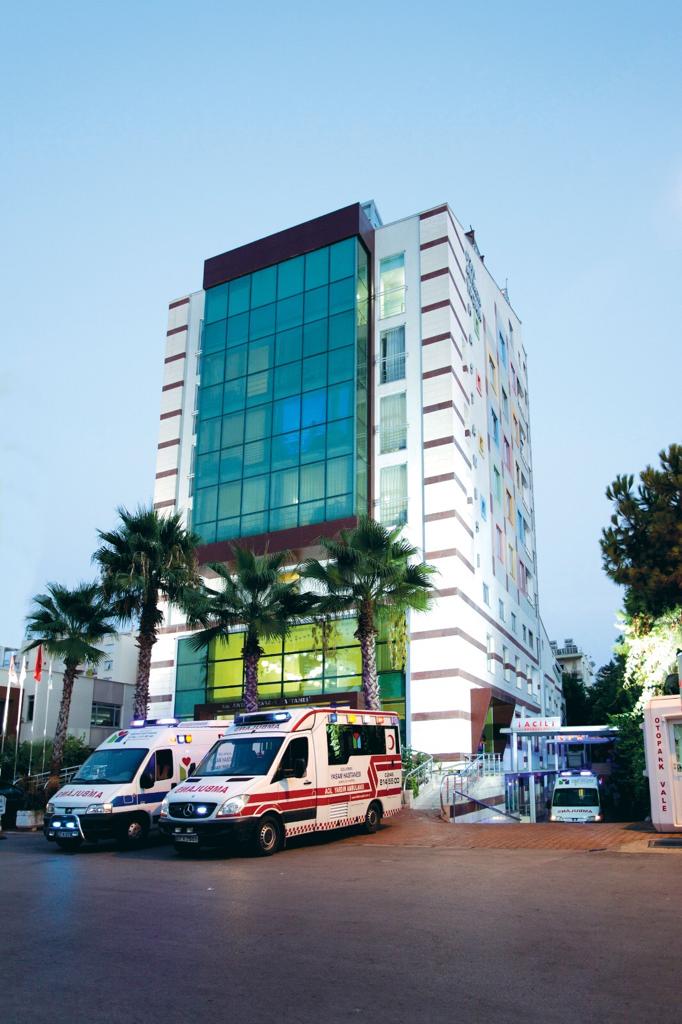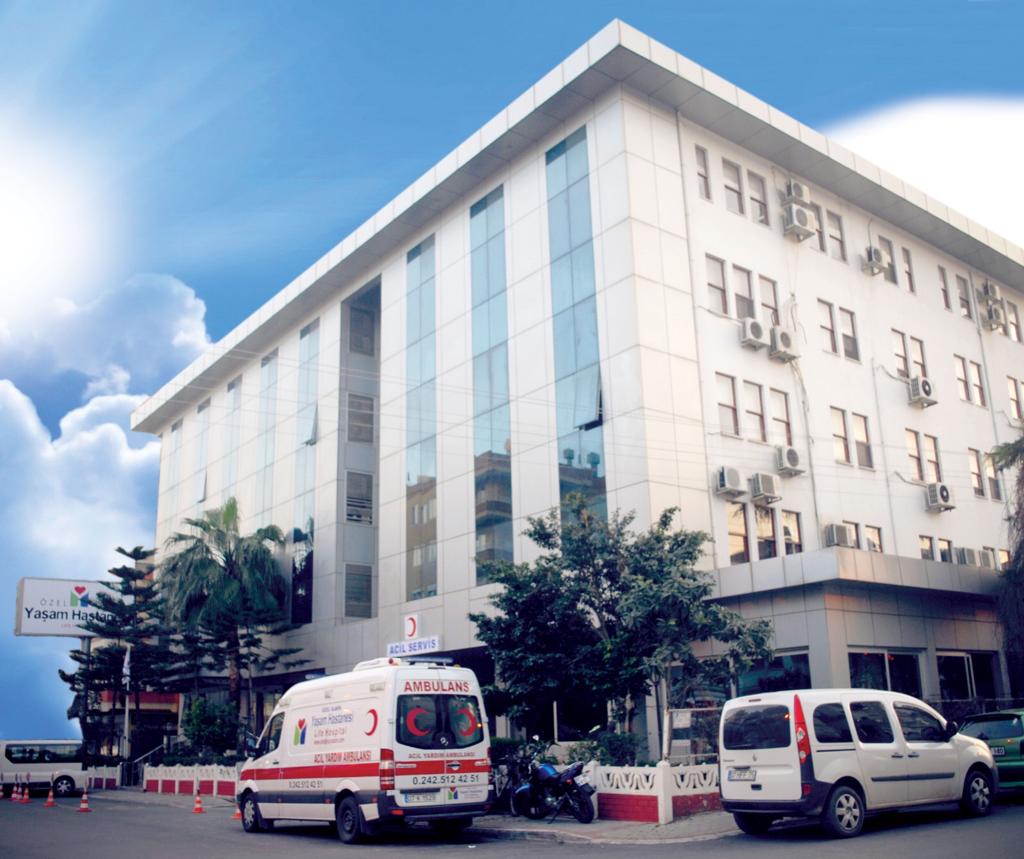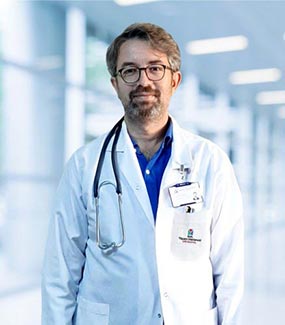Thoracic surgery is the branch of surgery that deals with the surgery of tissues and organs in the thoracic cavity other than the heart. Thoracic Surgery deals with the diseases of the lungs, trachea, esophagus and ribs, as well as the permanent treatment of excessive sweating in the hands and feet, and chest bleeding due to trauma.
Lung Cancer
Surgical treatment of benign and malignant tumors of the lung; performed by the department of thoracic surgery. Surgical treatment of lung cancer, especially in the early stages, is promising. It is possible for a patient who has a tumor that has been caught at an early stage and has been properly removed completely to get rid of the cancer completely.
For this reason, in order to detect lung cancer early, it would be appropriate for everyone who smokes, especially after the age of 35, to have an x-ray once a year, and if possible, to have a chest tomography once a year after the age of 40. In lung cancer caught at an early stage; If the malignant tumor is surgically removed from the non-cancerous tissue, there is a chance for a healthy and long life.
Lung Emphysema and COPD Balloon therapy
In particular, COPD due to long-term smoking is one of the most common lung diseases in patients. Medication is essential in the treatment of this disease. However, in the advanced stages, drug therapy begins to not provide much benefit. In this period, relief can be achieved in patients with COPD balaon treatment and emphysema surgery.
Over Sweating of hands, armpits and feet
Excessive hand, foot, armpit, facial sweating and facial flushing treatments, hand, foot, armpit, facial sweating and facial flushing are more common in adolescence. These symptoms are observed in approximately 1 percent of the general population. These symptoms, which can generally progress in adolescence and sometimes up to adulthood, can be grouped under three groups. People with mild, moderate and severe conditions sometimes experience social and sometimes professional problems due to these complaints.
These symptoms, which may be due to sympathetic hyperactivity, can be resolved with Video-Thoracoscopic Thoracic Sympathetic blockades performed by Thoracic Surgeons when necessary.
We apply ETS Bilateral to patients who need surgical treatment. ETS, which was applied in two separate sessions, as right and left, many years ago, is now performed bilaterally (both sides in the same session) in the same session, with the shortening of the anesthesia period and the increase in surgical experience.
After this surgery, patients can go home after resting for 4-6 hours. Every person who rests for 2 days after the operation can return to work.
Fluid Collection in the Chest Cavity
Fluid accumulation in the chest cavity may occur due to many pulmonary and extrapulmonary diseases. The fluid accumulates in the potential space between the 2 pleura, one of which surrounds the outer surface of the lung and the other the inner surface. The fluid accumulating here causes pain in the chest and shortness of breath. In this case, the fluid may need to be drained. Surgical treatment is usually performed by draining the fluid through a thin tube.
Tracheal Tumors
Air taken from the mouth or nose reaches the lungs through the trachea. Benign or malignant tumors can occur in this airway. However, these tumors can sometimes be seen around the trachea rather than in it. This can compress the trachea by pressing it from the outside. Tumor, both inside and outside, can threaten the life of the patient by causing a narrowing in the trachea.
Tracheal tumors must be removed with an intervention. Otherwise, the patient may not be able to breathe. Removal of the tumor may be in the form of partial or complete removal of the tumor through a bronchoscope depending on the condition of the patient and the tumor, or in the form of an operation to completely remove the airway with the tumor and reconnect the trachea end-to-end. In some cases, it is necessary to place a stent in the trachea.
Deformities of the Chest (Inverted or Protruded Rib Cage)
The rib cage may show some abnormalities, especially in the anterior-middle part, due to some congenital reasons. The main ones are: The collapse of the middle of the rib cage, the protrusion of the rib cage. In both cases, correction can be made with the surgical method.
Chest Traumas
Fractures, hemorrhages or organ injuries that occur in the chest due to traffic accidents or falls are treated by thoracic surgery.
Congenital Anomalies of the Lung
As in all organs, a group of diseases occur in the lung due to some congenital causes. These diseases are usually caused by some wrong formations that occur during the baby's development in the prenatal 'in-the-womb period'. Such conditions are usually not life-threatening. However, sometimes it can cause discomfort in infancy and sometimes in adulthood. In these cases, surgical treatment may be required. This type of disease has no specific symptoms. However, in general, during the investigation of a lung disease, it can be revealed by further examinations made by experts in the subject.
Lung Hydatid Cyst
It is very common in our country. It is a disease that can be treated with surgical intervention. It is not malignant. It mostly consists of parasite eggs found in the hair of cats and dogs raised in unvaccinated and rural environments. Not found in city-raised, non-raw meat or vaccinated pets.
Closed Lung Surgery
In this method, surgeries are performed through 1-3 incisions ranging from ½ to 1 cm, with the help of an endoscopic camera and monitor. This method, which is applied in appropriate cases, shortens the length of hospital stay, reduces post-operative pain significantly, minimizes the possibility of complications, and creates a much more pleasing cosmetic appearance thanks to small incisions.




